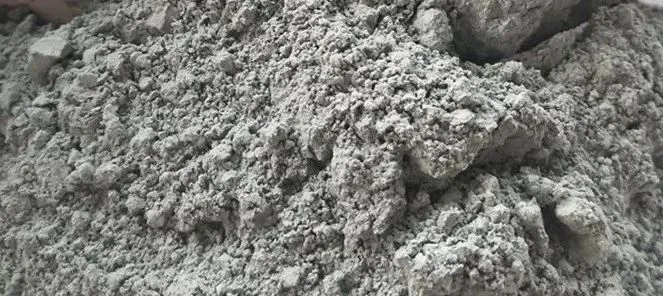Fly ash is a major waste from coal-fired power plants. Its physical properties greatly affect materials science. Fly ash’s properties, like density and particle size, affect its use in building materials and its environmental impact. Study of fly ash’s physical properties is in-depth. Its potential in materials science is being explored. This may provide new, sustainable solutions for environmental protection.

Physical properties of fly ash such as density and particle size:
Fly ash has physical properties like density, bulk density, and fineness. These are macroscopic reflections of its chemical and mineral compositions. Fly ash has a density of 1.9 to 2.9 g/cm³. Its bulk density is 0.531 to 1.261 g/cm³. Its specific surface area is 800 to 19500 cm²/g by nitrogen adsorption and 1180 to 6530 cm²/g by air permeability. The fineness and particle size of pulverised fuel ash are important. They directly affect its activity and other properties. The finer the pulverised fuel ash, the greater the proportion of fine powder, and the greater its activity.
Influence of pulverised fuel ash physical properties on material performance:
Fly ash’s physical properties greatly affect its performance in materials. For example, fly ash’s fineness and particle size can affect cement’s hydration. This, in turn, affects the material’s strength and durability. Studies show that adding pulverised fuel ash will affect high-water materials. It will change their setting time, density, and moisture content. This will, in turn, affect their engineering properties. Adding more fly ash will lower the peak strength of high-water materials. But, it will increase their residual strength. The elastic and deformation moduli will also decrease. Also, the pozzolanic activity of fly ash can react with cement’s hydration products. This forms a C-S-H gel. It will increase the slurry’s strength and density.
Application of fly ash in the development of new materials:
Fly ash, with volcanic ash activity, has been used to make new building materials. For example, fly ash can be used as a cement admixture. It improves cement performance, reduces consumption, and cuts costs. In concrete, pulverised fuel ash can improve workability, fluidity, and operability. It can also enhance strength and durability over the long term. Also, pulverised fuel ash makes geopolymers, synthetic ceramics, and refractory insulations. It’s used in new smart building materials, too.
How does fly ash pozzolanic activity affect cement hydration reaction:
Fly ash has volcanic ash activity. It reacts with calcium hydroxide (Ca(OH)2) from cement hydration. This reaction makes cementitious substances, like hydrated calcium silicate and hydrated calcium aluminate. These products can strengthen and toughen concrete. They can also resist corrosion. The active SiO2 and Al2O3 in fly ash react with Ca(OH)2 in the alkaline environment after cement hydration. This forms hardened cementitious substances. They fill the capillaries of concrete and improve its internal structure. As a result, the density and strength of the concrete increase.
Many factors affect the volcanic ash activity of fly ash. They include its chemical composition, surface area, particle size, and calcination temperature. The glassy SiO2 and Al2O3 in fly ash are the main sources of volcanic ash activity. They react with Ca(OH)2 during hydration. This makes hydrated calcium silicate and hydrated calcium aluminate gels. These gels are key to the strength of concrete.
In addition, the pozzolanic activity of Pulverised fuel ash is also related to its physical form. The glass microspheres in fly ash have a smooth, dense surface. They reduce water, densify and homogenize concrete, and improve its flow. They also help the initial hydration of cement. And, they improve the hardened properties of the concrete.
The influence of Pulverised fuel ash’s pozzolanic activity on cement hydration reaction is also reflected in the following aspects:
1. Improve the cement paste’s uniformity. Increase its consistency. Reduce bleeding and stratification.
2. Fly ash can improve the fluidity and pumpability of concrete. This is true for concrete with a low water-cement ratio.
3. The pozzolanic reaction of fly ash slows cement’s hydration rate. This, in turn, reduces the temperature rise in concrete from hydration heat. It helps prevent temperature cracks in the concrete.
4. The active components in Pulverised fuel ash react with ettringite in cement. This reduces the amount of ettringite generated. It also increases other hydration products. These changes affect the structure of the ettringite. So, they lower the compressive strength of high-water materials.
In summary, Pulverised fuel ash from volcanic activity reacts with Ca(OH)2 from cement hydration. It creates more hydration products. These improve concrete’s strength, durability, and internal structure. Thus, they enhance its properties.
Conclusion
Studying the physical properties of fly ash is vital. It helps improve its value in materials science. Future research may include: classifying Pulverised fuel ash in detail, improving its use in cement and concrete, developing high-value uses for it, and exploring new uses in environmental work and agriculture. These studies can improve Pulverised fuel ash use. They can also boost environmental protection and sustainable development.
